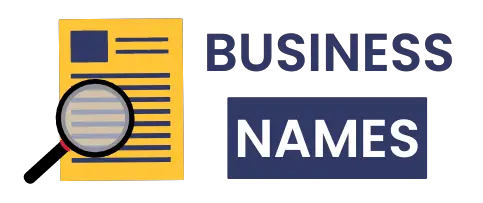Tax cuts would end in 2026, and rates would rise. For years, we heard about the “tax bomb” of 2026. A new law made those low rates permanent, so many believe the bomb was defused.
They are wrong. The real tax bomb is still ticking. It’s not about higher rates, but a minefield of hidden “stealth taxes” that can wipe out your savings. These new rules punish high-income years, making a simple Roth conversion a costly mistake.
That’s why I’m acting now. The old advice is useless, and this article will show you the new playbook to protect your money.
The New Reality – Deconstructing the “Tax Bomb”

Why the 2026 “Tax Bomb” Is Not What You Think
For years, people talked about a “tax bomb” set to go off on January 1, 2026. This was the day when the 2017 tax cuts were supposed to end.
The story was simple and scary. If Congress did nothing, the low tax rates we were used to would disappear. They would go back to the higher rates from before 2018. Millions of people, especially those near retirement. We were told to get ready for a big tax hike. This was the tax bomb everyone watched.
But something else happened. In July 2025, Congress passed a new law called the “One Big Beautiful Bill Act” (OBBBA). This law made most of the lower tax rates permanent.
The bomb, it seemed, was gone. People felt a lot of relief. With tax rates staying the same, it felt like you didn’t need to worry about tax planning, like Roth conversions, anymore.
This is a big mistake.
The old tax bomb is gone. But a new one took its place. This one is trickier and can cost you a lot more if you’re not careful. The real 2026 tax bomb isn’t about higher tax rates. It’s a minefield of hidden “stealth taxes.”
The new law created a bunch of tax breaks that disappear if you earn too much money. Your income is now a trigger. A single, large chunk of income, like from a big Roth conversion, can cause a chain reaction. It can make your real tax rate shoot up way higher than the official tax brackets say.
This is the new danger. It comes from confusing rules, not higher rates. And it’s exactly why I’m doing a careful, multi-year Roth conversion plan, starting now. The window to get this right is open, but you need a new plan. The old advice no longer works. It’s time to learn the new rules of the game before it’s too late.
How the New Tax Rules Work

To fix the problem, you first have to know what it is. The new law, OBBBA, didn’t just keep the old rules. It created a new tax situation with its own set of traps. Let’s look at what changed.
What Stays the Same?
The new tax law is built on making some of the old rules permanent. This makes things seem stable, but it hides the tricky parts.
Permanent Tax Brackets
The seven tax brackets are here to stay. For 2026, the rates are still 10%, 12%, 22%, 24%, 32%, 35%, and 37%. This was the big news that made many people think the tax problem was solved.
Permanent Standard Deduction
The higher standard deduction is also permanent. This made filing taxes simpler for millions of people. For 2026, the standard deduction is $16,100 for single people, $32,200 for married couples, and $24,150 for heads of household.
Permanent End to Personal Exemptions
To get the higher standard deduction, personal exemptions were removed. The new law makes this change permanent. This makes the tax math simpler.
Permanent QBI Deduction
Business owners can relax a bit. The 20% deduction for qualified business income (QBI) is now permanent. This is a key tax break for many small businesses.
These permanent rules give you a predictable base. The table below shows the key numbers for the 2026 tax year.
| Table 1: 2026 Federal Income Tax Brackets & Standard Deductions |
| Tax Rate |
| 10% |
| 12% |
| 22% |
| 24% |
| 32% |
| 35% |
| 37% |
| Standard Deduction |
The Hidden Tax Traps You Need to Know

Under the calm surface of permanent rates lies the real danger. The new law has deductions and credits that look great at first. But they are booby-trapped. They disappear quickly if your income goes up.
This creates “benefit cliffs,” where one extra dollar of income can cost you thousands in lost tax breaks. This is the new tax bomb.
The Senior “Bonus” Deduction Trap
The new law gives people over 65 an extra $6,000 “bonus” deduction. For a married couple over 65, that’s a $12,000 boost. Here’s the trap. This benefit starts to go away if your income is over $75,000 (for singles) or $150,000 (for married couples).
A Roth conversion could easily push you over that limit. If that happens, the whole $6,000 or $12,000 deduction vanishes. A $10,000 conversion could end up adding $22,000 to your taxable income.
The SALT Deduction Mirage
If you live in a high-tax state, you might be happy that the State and Local Tax (SALT) deduction cap was raised from $10,000 to $40,000. It looks like a huge tax cut. But for many, it’s not real. You only get the full deduction if your income is under $500,000.
The benefit disappears completely if your income goes over $600,000. A large Roth conversion can push you through this zone and wipe out a $30,000 deduction you were counting on.
The AMT’s Revenge
The Alternative Minimum Tax (AMT) is a separate tax system to make sure high earners pay some tax. The old law made it harder to get hit by the AMT. The new law brings it back. It lowers the income level where your AMT exemption starts to disappear.
And it doubles the rate at which it disappears. This creates a hidden tax rate much higher than the official ones. It will pull more people back into the costly AMT system, especially if they have a big income event like a Roth conversion.
The Charity Squeeze
The new law also makes it harder to get a tax break for giving to charity, especially for high earners. For people who itemize, the first part of your donation gives you no tax benefit.
And for people in the top 37% tax bracket, the value of all your itemized deductions is capped. This makes it less attractive to give large amounts to charity.
These rules create a strange situation. The law made tax rates permanent, which seems to make tax planning less urgent. But by adding these sharp income limits, it created a huge penalty for having a high-income year.
This leads to a key point: the tax bracket you see on paper is often a lie. Your true tax rate on the next dollar you earn can be much higher than you think.
Look at the person who could get the bigger SALT deduction. They are in the 35% tax bracket. If they convert $100,000, they might think they’ll pay $35,000 in tax. But if that conversion pushes their income from $500,000 to $600,000, they also lose their $30,000 SALT deduction.
Their taxable income didn’t go up by $100,000. It went up by $130,000 ($100,000 from the conversion + $30,000 in lost deductions). The tax on that is $45,500. The real tax rate on their $100,000 conversion is a shocking 45.5%. This is the hidden danger of the new tax code.
| Table 2: Summary of Key OBBBA “Stealth Taxes” and Phase-Outs |
| Provision Name |
| Senior “Bonus” Deduction |
| Expanded SALT Deduction |
| Alternative Minimum Tax (AMT) |
| Charitable Deductions |
The Proactive Solution – The Roth Conversion Playbook

Knowing about the new tax minefield is the first step. The second is getting the right tool to get through it. For me, that tool is a smart, multi-year Roth conversion. A Roth IRA is more than a retirement account. In this new world, it’s the best defense against tricky rules and hidden taxes.
Why a Roth IRA Is the Best Defense
A Roth conversion is when you move money from a pre-tax account, like a traditional IRA or 401(k), to a post-tax Roth IRA. You pay income tax on the money you convert today. In return, all future growth and withdrawals are 100% tax-free. This has always been the deal, but the new law makes it much more valuable.
Benefit 1: Lock in Today’s Tax Rates
The main benefit is paying taxes at today’s known rates. The new law made current rates “permanent,” but no tax law is truly forever. It’s possible that tax rates will have to go up in the future.
A Roth conversion is like insurance against that risk. By paying taxes now, you protect a part of your retirement money from any future tax rate hikes. You create a pile of tax-free money that gives you a lot of freedom in retirement.
Benefit 2: Get Rid of the RMD “Time Bomb”.
This might be the most important benefit now. Traditional IRAs and 401(k)s have Required Minimum Distributions (RMDs). These force you to start taking out taxable money every year, starting at age 73 or 75. These RMDs are a source of taxable income you can’t control.
In the new tax world, these forced income spikes are what will push many retirees over the income cliffs year after year. This will cause them to lose deductions and pay more for Medicare. RMDs are the real enemy under the new law.
But Roth IRAs have no RMDs for the original owner. By converting to a Roth, you are getting rid of the RMD time bomb. You get back complete control over your taxable income in retirement. This control is key to staying below the hidden tax limits.
Benefit 3: Leave a Powerful, Tax-Free Gift. The benefits of a Roth IRA go beyond your own life. When you leave a Roth IRA to your kids or grandkids, they can take the money out tax-free.
This is very different from a traditional IRA, which is a fully taxable inheritance. Leaving a Roth IRA is one of the most tax-smart gifts you can give your family.
How to Plan Your Roth Conversion for 2025-2026

Doing a Roth conversion now is not a simple move; it’s a careful one. A big, poorly timed conversion can cause more problems than it solves. The goal is to move money from the pre-tax world to the tax-free world while paying the lowest possible tax rate. Here is the plan I am following.
The Golden Rule: Pay the Tax with Other Money
This is the most important rule for smart conversions. You should always pay the tax bill from your conversion with money from a regular bank or brokerage account.
If you use money from the IRA itself to pay the tax, you hurt your own plan. First, you are putting less money into the tax-free Roth account. Second, if you are under 59 ½, the money used for taxes is an early withdrawal and you’ll likely pay a 10% penalty on it.
A good Roth conversion plan is also a cash flow plan. The amount you can convert each year depends on how much cash you have to pay the tax. This forces you to take a multi-year approach.
The “Fill the Bracket” Strategy
The main tactic for a multi-year plan is called “bracket-filling.” The idea is simple. Each year, you figure out your expected taxable income. Then, you convert just enough from your traditional IRA to fill up your current tax bracket, but not spill into the next higher one.
For example, if the 22% bracket for a married couple ends at $211,400 and their other income is $150,000, they could convert up to $61,400. All of it would be taxed at 22%. If you do this for several years, you can move a lot of money to a Roth at a low, controlled rate.
How to Avoid the Hidden Tax Traps: A Real Example
Of course, with the new law, just looking at tax brackets isn’t enough. You have to check how the conversion affects all the income-based phase-outs. Let’s go back to the bad situation of the person with $500,000 of income who could get the $40,000 SALT deduction. They are in the 35% tax bracket.
The Bad Plan
Convert $100,000. They expect to pay $35,000 in tax ($100,000 * 35%).
The New Reality
The conversion pushes their income to $600,000. The new law says this wipes out their extra SALT benefit. Their deduction drops from $40,000 back to $10,000.
The Math
They lost $30,000 in deductions. So their taxable income went up by $130,000 ($100,000 conversion + $30,000 lost deduction).
The Real Tax Cost
The tax on this extra $130,000 at their 35% rate is $45,500.
The Real Rate
The real tax rate on their $100,000 conversion is 45.5% ($45,500 / $100,000). That’s much higher than the 35% they thought they would pay.
This example shows the danger clearly. A smarter plan would have been to convert a smaller amount, maybe only $50,000, to stay below the $600,000 cliff. Or they could spread the big conversion over two years. This is the kind of careful planning you need to win the new tax game.
When to Act: Finding Your “Golden Window”
The timing of your conversions can make a big difference in the total tax you pay. There are a few times that are a “golden window” of opportunity.
Low-Income “Gap Years”
For many, the best time for conversions is in the years right after you retire but before you start Social Security and RMDs. During this “gap,” your taxable income is often at its lowest point. This is a perfect chance to do conversions in the 10%, 12%, and 22% brackets.
Market Downturns
A down market can be a good thing for Roth conversions. When your traditional IRA’s value is lower, you can convert the assets for a lower tax cost. You are moving more shares for the same tax dollars. When the market recovers, all of that growth happens inside the tax-free Roth IRA.
Early in the Year
It’s often smart to do your conversion early in the calendar year, like in January. The conversion is taxed in the year it happens, but the tax isn’t due until you file your return up to 15 months later. This gives you more than a year to save up the cash to pay the tax bill.
PExecution – Bringing the Strategy to Life

Theories and plans are great, but seeing them in action makes things clear. These case studies show how these ideas can be used to get great results.
How Roth Conversions Work in the Real World

The Pre-Retiree Ladder – Mark & Elena’s Plan
The People
Mark and Elena, a retired couple, both 66. They have $2.4 million in traditional IRAs and $800,000 in a brokerage account. Their current income keeps them in the 22% tax bracket.
They worry about the huge RMDs that will start at age 73. They also worry about the “widow’s penalty”—if one of them dies, the survivor will have to use single-filer tax brackets, which could make their tax rate jump.
The Plan: Their advisor suggests a multi-year Roth conversion ladder. The goal is to move a lot of their IRA money to Roth accounts during their “golden window”—the years before RMDs and Medicare surcharges are a big problem. They will “fill up” the 24% tax bracket each year.
The Action: The plan is laid out carefully. All taxes will be paid with cash from their brokerage account.
Years 2025-2027 (Before Medicare): They will do larger conversions of $220,000 each year.
Years 2028-2032 (On Medicare): Once on Medicare, they need to be careful about their income. They will lower their yearly conversions to $180,000 to avoid big spikes in their healthcare costs.
The Result: By following this eight-year plan, Mark and Elena will have converted over $1.6 million to Roth IRAs. This will cut their future RMDs by over 60% and save them an estimated $400,000 in lifetime taxes. Their kids will also get a large, tax-free inheritance instead of a tax problem.
| Table 3: Multi-Year Roth Conversion Model for Mark & Elena (2025-2029) |
| Year |
| 2025 |
| 2026 |
| 2027 |
| 2028 |
| 2029 |
How a Senior Can Avoid the New Tax Traps – David’s Smart Move
The Person
David, a 67-year-old single retiree. His income is $70,000 a year. His income is just under the $75,000 limit for the new $6,000 Senior Bonus Deduction. He has a $500,000 traditional IRA he wants to start converting.
The Question
How much should he convert in the first year?
The Bad Plan
Without knowing the new law, David decides to convert $50,000. This pushes his income to nearly $125,000. He flies past the limit for the Senior Bonus Deduction.
The entire $6,000 deduction is gone. His taxable income doesn’t just go up by $50,000; it goes up by $56,000. He fell right into one of the new law’s hidden tax traps.
The Smart Plan: After talking to an advisor, David takes a smarter approach. He knows his main goal this year is to keep his valuable deduction. He does a small, careful conversion of just $5,000. This brings his income right up to the $75,000 limit, but not over.
He keeps his full $6,000 deduction and still starts moving money to his Roth. This shows the new way of thinking: sometimes the best move isn’t the biggest one. The long-term goal is to convert a lot of the IRA, but the yearly moves must be smart to avoid the new penalties.
Your Chance to Act Is Now

The tax rules have changed for good. It’s no longer about a simple tax hike in 2026. The old tax bomb was fake. The new one—a tricky minefield of disappearing deductions and hidden extra taxes—is already here.
The new law has created a world where doing nothing is punished, and where control over your yearly income is the most valuable thing you have.
The tax code is telling us what to do. It has given us known, low tax rates and a clear map of income traps. This gives us a clear, but maybe short, chance to act.
That is why I am moving my own pre-tax money to Roth accounts now—not in one big move, but bit by bit, year by year, paying close attention to the new income limits.
For me, it is the best thing I can do to take control of my financial future, lower my long-term risk, and build a lasting, tax-free gift for my family.
Doing nothing is now the biggest risk. The stable tax brackets are a reason to plan, not to wait. I suggest you start the process today.
Run the Numbers
Start by using a good online Roth conversion calculator to get an idea of the benefits and tax costs for you.
Map Your Future
Get your financial papers together—tax returns, investment statements—and make a guess of your income for the next five to ten years. Find your potential “golden window” for conversions.
Get Professional Help
Most importantly, don’t do this alone. The risks are too high, and the new rules are too confusing. Set up a meeting with a good tax professional or a CERTIFIED FINANCIAL PLANNER™ professional.
Work with them to make a personal, multi-year conversion plan that fits your life and avoids the specific hidden taxes of the new law.
The deadline to do a Roth conversion for the 2025 tax year is December 31, 2025. The clock is ticking. The time to act is now.

